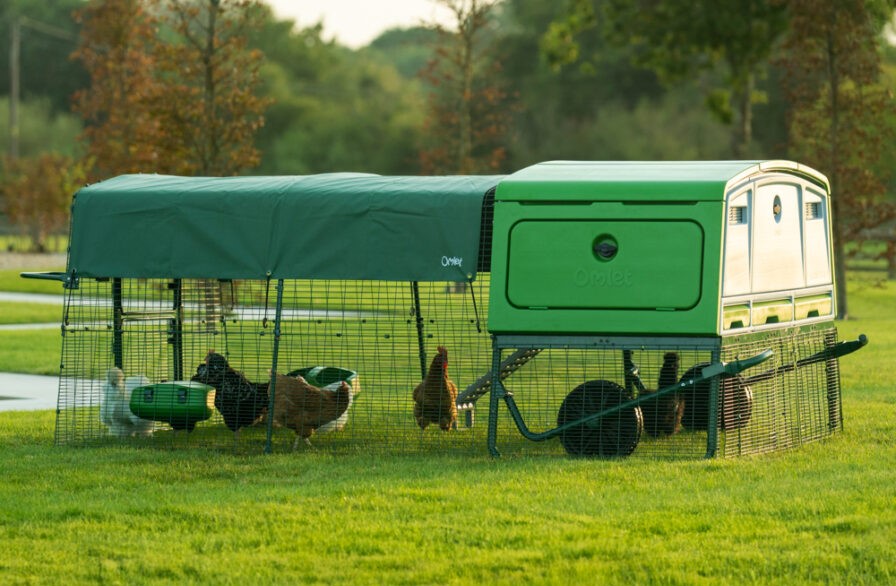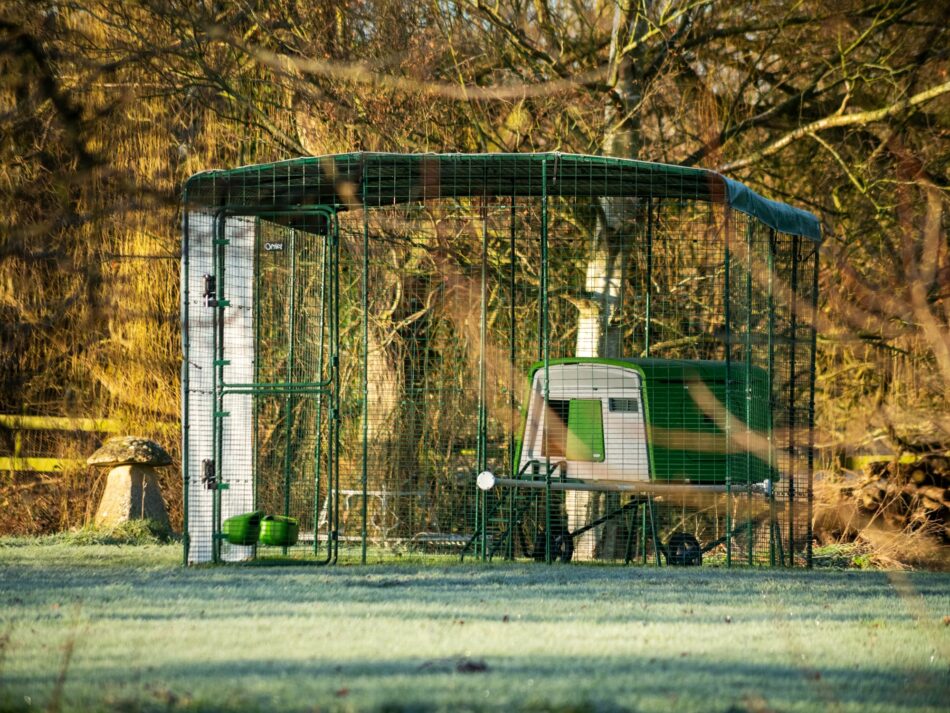Preparing your chicken coop for the changing seasons
It’s the most pivotal time of the year again — chickens are soaking in the last rays of summer sunshine while brisk evenings become more common. With this transitional time taking place over the course of several weeks, it’s the perfect time to begin preparing your chicken coop for the changing seasons. Learn how to help your flock acclimate to the weather and temperature changes by making some adjustments to their coop and run.
Coop considerations
To help prepare your hens for the cooler temperatures, there are a few things you can do to their chicken coop and run to support them through this season of change. From special cleaning sessions to preparing for wild weather, here’s your fall chicken-keeping checklist.
Deep cleaning
You should give your chicken coop a thorough cleaning at least twice a year: in the spring, and in the fall. By giving your coop a deep clean, you’ll ensure that your flock goes into the new season with a crisp, clean home to support a healthy immune system. Spot cleanings and bedding changes should be carried out weekly, but this seasonal deep cleaning should involve taking out all removable components of your coop to thoroughly pressure wash or scrub clean.
Bedding refresh
To prepare for the chillier evenings and soon to be frigid nights, you’ll want to change your flock’s bedding from pellets or recycled paper to wood shavings or straw. Shavings and straw have better insulating properties, which helps retain heat within the coop. Omlet’s Eglu Chicken Coops have twin-wall insulation to help retain heat, with ample ventilation to prevent moisture buildup. The Eglu Pro has the added benefit of adjustable vents to allow less air in during the colder months.
Change your clocks — and batteries
Changing your clocks soon? Then it’s time to check the batteries in your Smart Autodoor and adjust the time settings. Change the batteries if needed, and adjust the schedule accordingly to accommodate for the shorter days, If your Smart Autodoor is programmed to open and close with the amount of daylight, then you’re all set for the coming season.
Cover those feathers
Weather covers for chicken runs will help keep cold condensation off of your chickens. Chickens handle the cold quite well, but only as long as they’re able to stay dry. Wet feathers can quickly spell hypothermia during cold weather, and muddy runs can cause bumblefoot or other bacterial infections in your flock. Opt for transparent run covers during the frigid weather to allow sunlight to warm your flock while protecting them from the wetter weather.
Weather the storms
Fall is notorious for its wild weather patterns. Depending on where you live, the only predictable part of fall weather is that it’s unpredictable. Make sure your chicken coop is outfitted with wheels and handles for quick, easy movement in preparation for severe weather events. You’ll also need to check your coop after each storm to assess it for damage. Eglu chicken coops are designed to be weatherproof, giving you a warp and worry-free outlook on severe weather.
Warm up the water
Once the weather dips below freezing, your chickens’ water will begin to freeze. Keep your chicken waterers in sunlight to help them stay thawed during the day, and break the ice as needed. Bird bath heaters can be submerged in chicken waterers to keep them thawed, or you can keep your flock’s water from freezing over by adding boiling water to their container several times a day.
Seasonal specifics
As fall settles in, your flock will start experience natural, biological changes. The dwindling daylight hours is a signal for them to shed their old feathers in favor of new ones, and egg laying will become less frequent. See what other fall-specific activities your flock will be up to this season.
The messy business of molting
Chickens molt annually during the fall. This process involves your chickens shedding all of their feathers in order to regrow them in preparation for the winter. Because this event takes immense amounts of energy, your hens will lay fewer eggs or stop laying altogether. Chickens will usually complete a molt within 4-12 weeks. To help your hens through a molt, offer them plenty of protein in the form of dried insects, or rich hay like alfalfa.
Wood ash for better dust baths
One of the best additions to your chickens’ dust bath is ash from burned wood or leaves. Utilize the remnants of your autumn bonfires in your chickens’ dust bathing area by sprinkling or pouring them directly into the basin or designated spot. Make sure the ash isn’t from fires that contained treated wood or other chemicals, as this can cause harm to your chickens. Natural tree branches, leaves, or untreated logs for a fire make perfect ashes that your hens will revel in.
Omlet and your flock
Fall is an incredible time to spend with your flock. Make sure they’re fully supported throughout this season and the ones to come with insulated chicken coops, a Smart Autodoor, and chicken run covers. With Omlet, you and your flock can approach the changing seasons with anticipation rather than apprehension.
This entry was posted in Chickens


